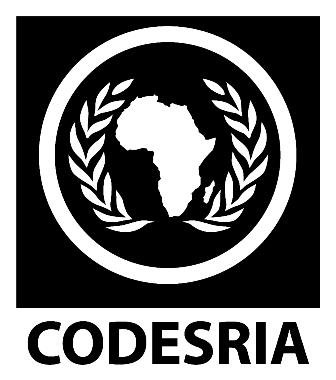ARBORESCENT SPECIES DIVERSITY AND STOCKING IN MIOMBO WOODLAND OF URUMWA FOREST RESERVE AND THEIR CONTRIBUTION TO LIVELIHOODS, TABORA, TANZANIAStatus
Keywords:
Forest trees, forest resources, trees, wood, sustanaible agriculture, shrubs, TanzaniaSynopsis
Despite the fact that miombo woodlands are rich in species and offer extensive
products and services, there is meager knowledge on the link between miombo
woodlands and livelihood of local communities. This study assessed arborescent (tree
and shrub) species diversity and stocking in the miombo woodland ofUrumwa Forest
Reserve (UFR) and their contribution to livelihoods of local communities. Four data
sets were collected including: ecological, socio-economic, livelihood and institutional
data. Ecological data were collected through forest inventory while socio-economic,
livelihood and institutional data were collected through household questionnaire
survey, Participatory Rural Appraisal (PRA) and checklist. Supplementary secondary
data were obtained through literature survey and internet search. Analysis of inventory
data was done by using Microsoft excel while other data sets were analysed by using
Statistical Package for Social Sciences (SPSS). Content and Structural-Functional
analyses were used for qualitative data. This study showed Shannon-Wiener Index of
Diversity of 3.40 for the miombo woodland of UFR. Furthermore, logistic regression
analysis showed that, increase in species diversity of the miombo woodland increased
chances of the miombo woodland's contribution to livelihoods of local communities.
Thus, the null hypothesis was rejected and alternative hypothesis was adopted. The
findings in this study show mean stems density, basal area and volume of 583 ± 49
SPH, 8.54 ± 0.51 m2/ha and 58.41 ± 4.09 m3/ha respectively for UFR. Results show
that, the miombo woodland contributes 59% to total household annual income.
Similarly, results indicate that, to meet the wood resource requirements about 2 m3 per
hectare of wood resources is extracted annually from UFR. The study revealed both
Downloads
References
Abbot, J. I. 0. and Homewood, K. (1998). A History of Change: Causes ofMiombo Woodland Decline in a Protected Area in Malawi. Journal of Applied Ecology 36: 422 - 433.
Abbot, P.G. (1997). The Supply and Demand Dynamics of Miombo Woodland: A Household Perspective. Dissertation for award of PhD Degree at University of Aberdeen, UK. 84 pp.
Abbot, P. G. & Lowore, J. D. (1999). Characteristics and Management Potential of Some Indigenous Firewood Species in Malawi. Journal of Forest Ecology & Management, 119: 111 - 121.
Abdallah, J. M. (2001). Assessment of the impact of non-timber forest products utilization on sustainable management of Miombo woodlands in Urumwa Forest Reserve, Tabora, Tanzania. Dissertation for award of MSc Degree at Sokoine University of Agriculture, Morogoro, Tanzania. 98 pp.
Acres, B. D.; Barrett, A. T.; Corker, I. R.; Davis, K.; Mansfield, J. E.; Myers, C. N.; Rackham, L. J. and Walton, R. K. (1984). Tabora Rural Integrated Development Project. Land use component. In: Land Evaluation and Land Use Planning in Tabora Region. (Edited by Mitchel, A J B.) Project report






